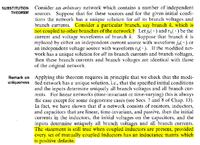CataM
Advanced Member level 4
- Joined
- Dec 23, 2015
- Messages
- 1,275
- Helped
- 314
- Reputation
- 628
- Reaction score
- 312
- Trophy points
- 83
- Location
- Madrid, Spain
- Activity points
- 8,409
In mathematics all theorems are easy to find their demonstration or full statement meanwhile in circuit theory I have been looking for several days and did not find anything. Only Thevenin, Norton and Superposition.
Not looking for the demonstration of the theorem but for the full statement of it which would answer me this questions:
Could be applied in non-linear circuits?
Could be used if there are dependant sources?
Maybe I was searching with the wrong words.
Not looking for the demonstration of the theorem but for the full statement of it which would answer me this questions:
Could be applied in non-linear circuits?
Could be used if there are dependant sources?
Maybe I was searching with the wrong words.
